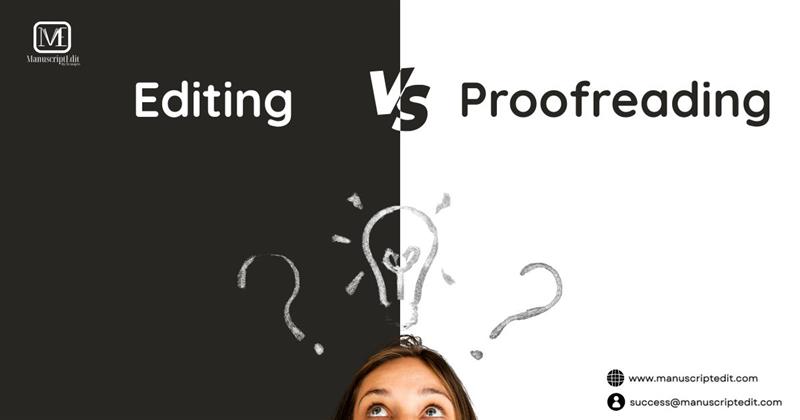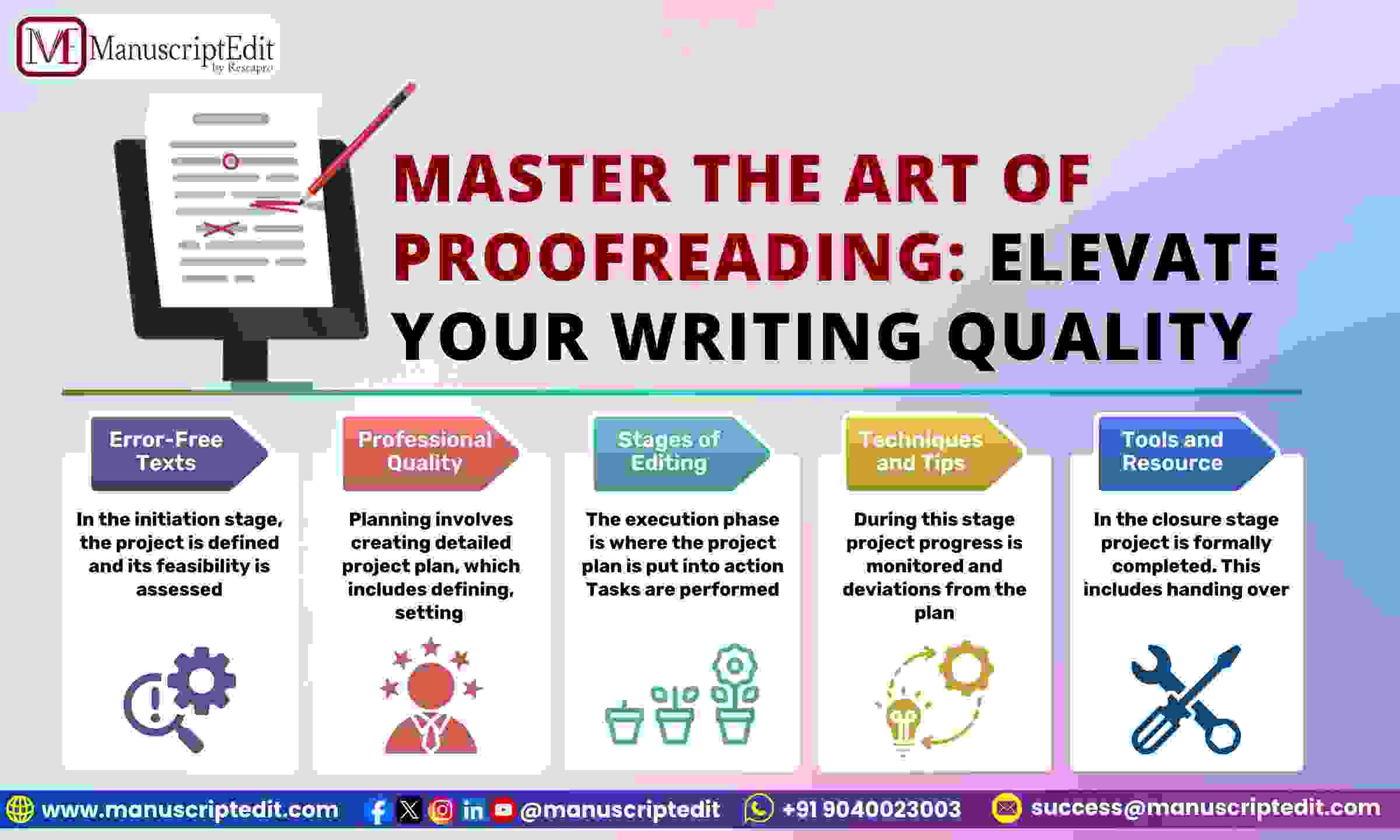Introduction
The submission of a manuscript to a peer-reviewed journal is stressful. Even when your research is solid, many authors face one frustrating hurdle: desk rejection — that is, the editor rejects it before sending it to reviewers, often because of clarity, language, or structure issues.
In other words, investing in professional editing makes a significant difference. In this blog, we will clarify what editing vs. proofreading really means, why clarity, flow, and structure matter for acceptance, and how using a specialised service like ManuscriptEdit can give your submission a strong head start.
Table of Contents
What is proofreading and editing?
Proof reading is the final polish: checking for typos, punctuation, spelling, and formatting inconsistencies. It is essential, but it does not address deeper issues such as logic, organisation, or argument flow.
Editing, in the academic context, is broader: improving sentence structure, ensuring clarity, refining argument flow, removing ambiguity, and aligning the manuscript with target-journal expectations (structure, style, references).
Many authors have confused these two. However, choosing only proofreading when you need structural editing may mean that your manuscript still fails desk screening because of poor clarity or organisation.
Why does clarity matter to acceptance?
According to guidance from Springer Nature, “good quality writing … increases the chances of acceptance for publication.” Springer Nature
How language, structure, and clarity influence your manuscript’s fate
- Editor-first scan: Many journal editors decide, within minutes, whether to send a manuscript for review. If they spot unclear phrasing, consistency issues, or chaotic structures, the rejection risk rises.
- Reviewer fatigue: A manuscript that is hard to read takes more time to evaluate; reviewers may raise more language or organisational issues, raising the chance of revision or even rejection.
- Reputation and impact: Clear writing signals professionalism and care — factors that matter when editors judge whether their work will fit their journal’s standards.
Editing vs Proofreading: key differences for authors
| Feature | Proofreading | Editing |
| Focus | Spelling, punctuation, formatting | Language, logic, flow, structure, journal alignment |
| Timing | At the final stage before submission | After full draft, before/alongside revisions |
| Impact on acceptance | Helps avoid language-rejection but not structural issues | Improves clarity & presentation — stronger influence on acceptance odds |
| Typical service needed for desk-rejection avoidance | Useful but may be insufficient | Highly recommended |
How ManuscriptEdit helps you maximise acceptance odds
When you choose ManuscriptEdit, you get more than a language check; you get a tailored service built for publication-ready manuscripts. Some of their features:
- A dedicated editor team of subject-matter experts across 1000+ disciplines.
- Services such as journal-specific formatting, reviewer-response letter editing, and target-journal alignment.
- Transparent process: submit your manuscript online → matched to specialist editor → receive the polished document ready for submission.
- Global experience: supporting authors in 80+ countries, handling a wide range of manuscript types.
Using their service helps you cross the language/structure barrier and focus on your research content, letting your work shine rather than being undermined by avoidable clarity issues.
When should you pay for editing (versus only proofreading)?
Consider editing (rather than proofreading) if:
- Your manuscript has been written by a non-native English speaker or a multi-author team in an inconsistent style.
- You are targeting high-impact or top-tier journals with strict clarity and format demands.
- You have had previous submissions rejected because of language/structural issues.
- You want to reduce the number of revision rounds by getting them right during the first submission.
Tips to maximise your manuscript’s readiness
- Choose the right target journal early: Formatting and editor’s expectations vary. Mentioning the target journal (when allowed) helps the editing service to tailor its structure.
- Allow enough time for editing: Last-minute proofreading is useful, but if you are under time pressure, your revision scope is limited.
- Use track changes and comments: Explore the edits and understand how they improve flow; this helps you learn and improve future manuscripts.
- Prepare a strong submission cover letter: many services (including ManuscriptEdit) offer cover letter editing. Do not neglect thisfirst impression count.
- Keep your research content robust: Editing helps the presentation; it cannot salvage weak methodologies or incomplete conclusions.
Why this matters for your career
A well-written, clearly structured manuscript stands a better chance at desk screening, goes to peer review, and gives you the best shot at publication. Publication leads to citations, reputation, grant opportunities, and collaborations; it is a cycle. By investing in editing, you will invest in your career trajectory.
If you are ready to take your work from draft to submission and want to reduce the risk of desk rejection, get a free 500-word edit sample from ManuscriptEdit now. 👉 Get your free sample here (or contact them via their ‘Request a Quote’ tool).
Do not let clarity issues stand between your research and publication — get the support tailored for acceptance.
Conclusion
Understanding the differences between editing and proofreading is the first step in this process. Recognising that clarity, language, structure, and journal alignment matter for acceptance is second. Choosing a specialised service such as ManuscriptEdit is your practical step to avoid desk rejection and boost the chances of submission. Your research deserves to be read, make sure it is presented at its best.
Click Here to more read interesting blogs.




